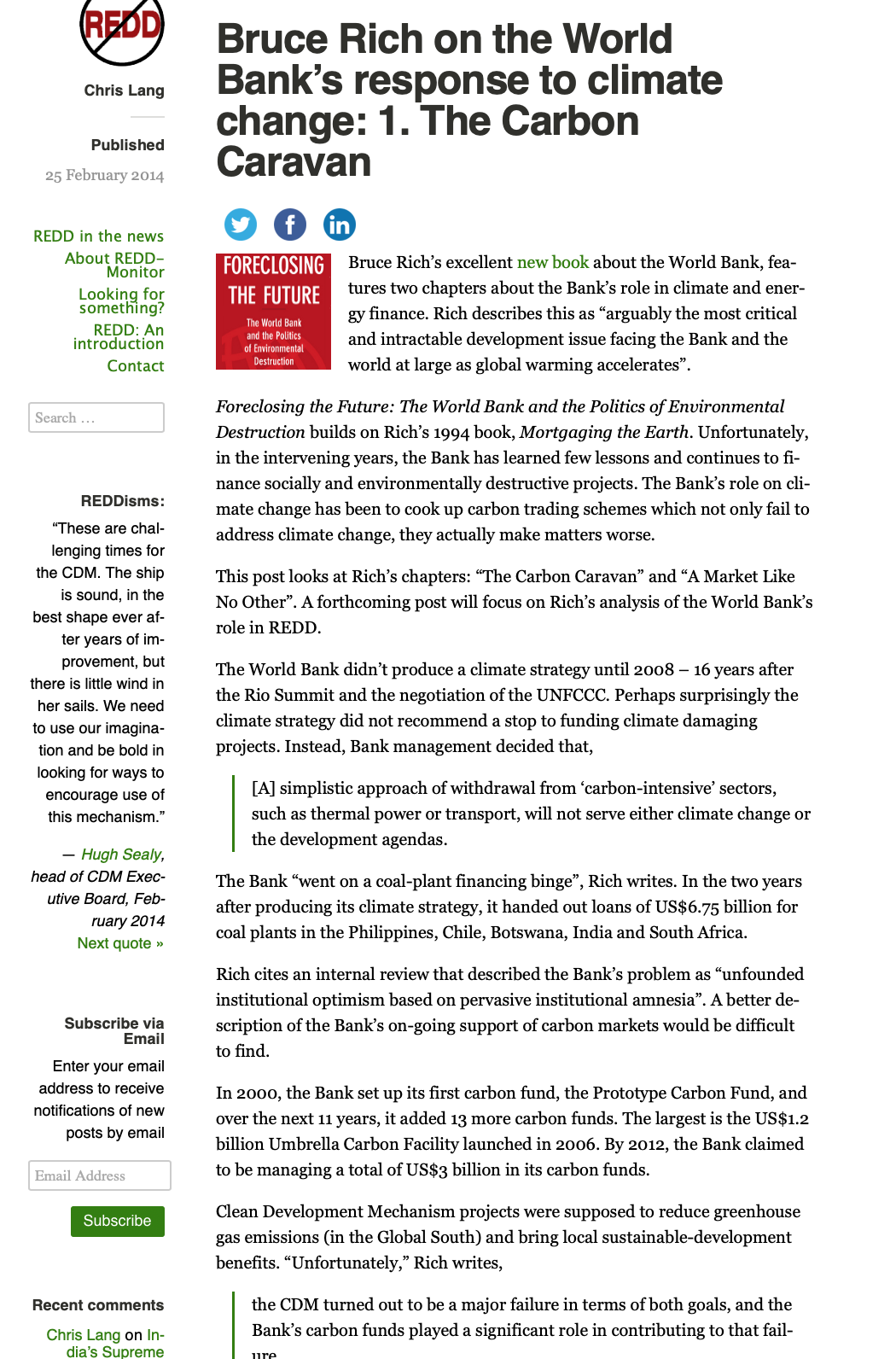- Bruce Rich, editor Chris Lang
- REDD-Monitor (blog)
- February 25, 2014
- web blog
First of two essays summarizing my analysis of the World Bank's record in addressing climate change, including managing global carbon trading funds, in the web blog and discussion forum "REDD-Monitor," editor Chris Lang. REDD is the acronym for a United Nations-World Bank supported scheme for international trading of carbon credits to preserve tropical forests as carbon sinks.
The World Bank didn’t produce a climate strategy until 2008 – 16 years after the Rio Summit and the negotiation of the UNFCCC. Perhaps surprisingly the climate strategy did not recommend a stop to funding climate damaging projects. The Bank “went on a coal-plant financing binge”, Rich writes. In the two years after producing its climate strategy, it handed out loans of US$6.75 billion for coal plants in the Philippines, Chile, Botswana, India and South Africa.Rich cites an internal review that described the Bank’s problem as “unfounded institutional optimism based on pervasive institutional amnesia”. A better description of the Bank’s on-going support of carbon markets would be difficult to find....By 2012, the Bank claimed to be managing a total of US$3 billion in its carbon trading funds mainly to jump start Kyoto Protocol Clean Development Mechanism projects. Clean Development Mechanism projects were supposed to reduce greenhouse gas emissions (in the Global South) and bring local sustainable-development benefits. “Unfortunately,” Rich writes, "the CDM turned out to be a major failure in terms of both goals, and the Bank’s carbon funds played a significant role in contributing to that failure. Rich looks at “additionality”, the “central concept of the CDM”, and points out that, in practice it was extraordinarily difficult to prove whether a particular CDM subsidized project, say, a wind farm in India or a hydroelectric project in China, would or would not have been built but for the CDM subsidy, and whether it would displace a cheaper, climate-unfriendly investment, such as a coal plant. Indeed, the major developing countries that would host most of the CDM project were rife with state manipulation of energy investment and markets, not to speak of corruption. The underlying operational concept of the CDM was arguably an exercise in futility, and an invitation to both gaming the system and outright fraud.



